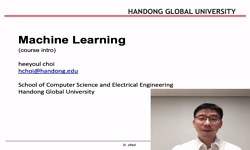Background: Prolonged wound drainage (PWD) is one of the most important reasons that increase the risk of early periprosthetic joint infection after arthroplasty. It is very important to evaluate the risk factors for PWD in the surgical field after ar...
http://chineseinput.net/에서 pinyin(병음)방식으로 중국어를 변환할 수 있습니다.
변환된 중국어를 복사하여 사용하시면 됩니다.
- 中文 을 입력하시려면 zhongwen을 입력하시고 space를누르시면됩니다.
- 北京 을 입력하시려면 beijing을 입력하시고 space를 누르시면 됩니다.



Predicting Prolonged Wound Drainage after Hemiarthroplasty for Hip Fractures: A Stacked Machine Learning Study
한글로보기https://www.riss.kr/link?id=A108850234
-
저자
Sultan Turhan (Department of Statistics, Mugla Sitki Kocman University, Mugla, Türkiye.) ; Umut Canbek (Department of Orthopedics and Traumatology, Mugla Sitki Kocman University College of Medicine, Mugla, Türkiye.) ; Tugba Dubektas-Canbek (Department of Internal Medicine, Mugla Sitki Kocman University College of Medicine, Mugla, Türkiye.) ; Eralp Dogu (Department of Statistics, Mugla Sitki Kocman University, Mugla, Türkiye.)
- 발행기관
- 학술지명
- 권호사항
-
발행연도
2023
-
작성언어
English
- 주제어
-
등재정보
KCI등재,SCOPUS,SCIE
-
자료형태
학술저널
- 발행기관 URL
-
수록면
894-901(8쪽)
- DOI식별코드
- 제공처
-
0
상세조회 -
0
다운로드
부가정보
다국어 초록 (Multilingual Abstract)
Background: Prolonged wound drainage (PWD) is one of the most important reasons that increase the risk of early periprosthetic joint infection after arthroplasty. It is very important to evaluate the risk factors for PWD in the surgical field after arthroplasty surgery. This can be accomplished using machine learning or artificial intelligence methods. Our aim in this study was to compare machine learning methods in predicting possible PWD.
Methods: The study was carried out on clinical, laboratory, and radiological data of 313 patients who underwent hemiarthroplasty (HA) for proximal femur fractures. We preprocessed the dataset and trained and tested machine learning methods using cross validation.
We compared various machine learning algorithms (linear discriminant analysis, decision tree, k-nearest neighbors, gradient boosting machine, and logistic regression [LR]) based on performance measures. We also combined the most successful algorithms with a metaclassifier. To help understand the relationship between risk factors, we provided a risk factor severity ranking.
Results: To estimate the risk of PWD, classification was performed with first-level classifiers and then integrated as a LR-based meta-learner stacking method. More performance improvements were achieved with the stacking method.
Conclusions: We found that the stacking method was superior to other methods in PWD classification. We determined that the volume of fluid collected from the drain, morbid obesity class, blood transfusion, and body mass index score were the four most important risk factors according to stacking.
동일학술지(권/호) 다른 논문
-
Total Knee Arthroplasty: Is It Safe? A Single-Center Study of 4,124 Patients in South Korea
- 대한정형외과학회
- Kyunga Ko
- 2023
- KCI등재,SCOPUS,SCIE
-
- 대한정형외과학회
- Se-Jun Park
- 2023
- KCI등재,SCOPUS,SCIE
-
- 대한정형외과학회
- Byung-Woong Jang
- 2023
- KCI등재,SCOPUS,SCIE
-
- 대한정형외과학회
- Orhan Balta
- 2023
- KCI등재,SCOPUS,SCIE




 KCI
KCI






